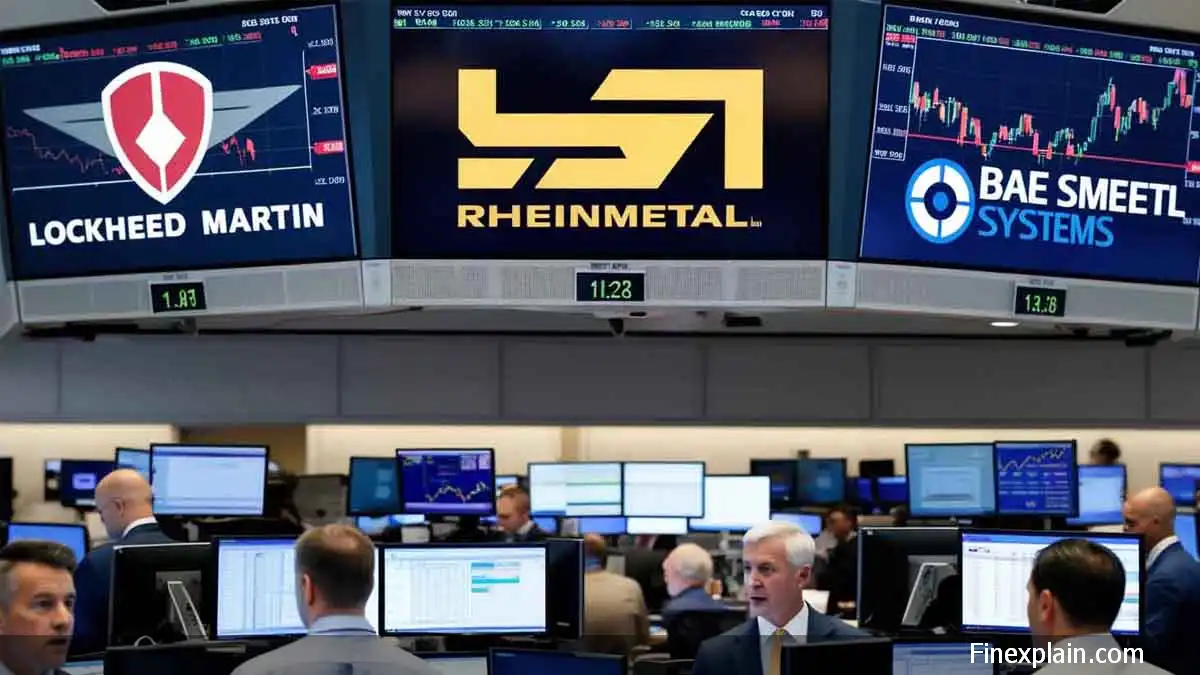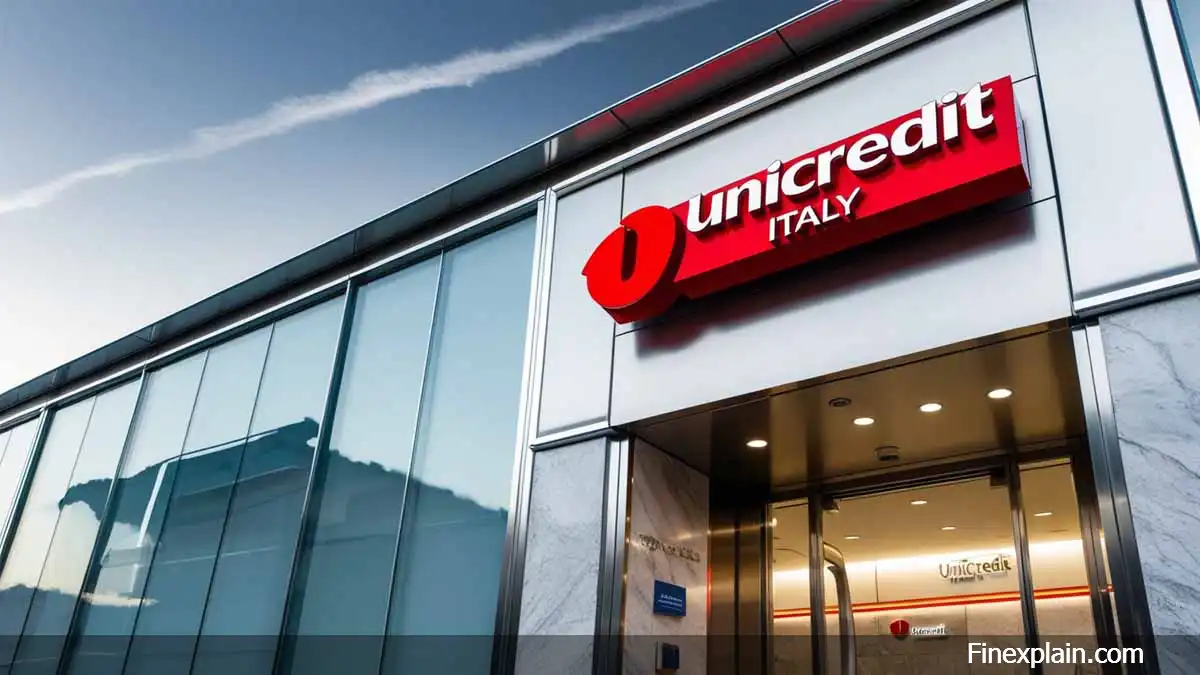The global defense sector is under the spotlight in 2025 — not only due to rising geopolitical tensions, but also because of its growing appeal to investors. With government military spending increasing across NATO, the EU, and the United States, major defense contractors are seeing surging stock prices and expanding order books. But is it the right time to invest in defense stocks? And which companies are positioned for long-term growth?
"Investing in defense is rarely about ideals — it's a confrontation between ethical concerns and the realities of global security and profit."
Why Are Defense Stocks Trending?
- Renewed interest from institutional and private investors – including funds, banks, and individual portfolio builders
- Ethical dilemma: high profit potential vs. moral concerns around military investments
- Global instability boosting demand for weapons, defense systems, and technology
Defense companies have become more than just military suppliers — they now represent a unique segment of the market where demand is driven by government contracts, long-term programs, and strategic necessity. For investors seeking resilience and potential returns, the defense sector offers a compelling, albeit controversial, opportunity.
Key Drivers Behind the Rise of Defense Stocks
- Rising military budgets across the U.S., European Union, and allied nations
- Rearmament programs in Germany, Poland, and Baltic states
- Ongoing support for high-tension zones such as Ukraine, Taiwan, and Israel
- Restocking weapons after large-scale deliveries to Ukraine and partner nations
These are not short-term catalysts — they reflect a long-term structural shift in how governments prioritize security and defense readiness. From NATO expansion to new EU defense initiatives, the trend is global and persistent.
Top Defense Companies in 2025: U.S. and European Leaders
The defense sector is dominated by a few key players with deep order books and strategic positioning:
United States
- Lockheed Martin – Aircraft (F-35), missiles, space systems
- Northrop Grumman – Drones, satellites, missile defense
- General Dynamics – Land systems, submarines, IT services
Europe
- Rheinmetall (Germany) – Armored vehicles, artillery, ammunition
- BAE Systems (UK) – Naval, air, and electronic warfare systems
- Leonardo (Italy) – Helicopters, avionics, defense electronics
- Saab (Sweden) – Fighter jets, radar systems, missile tech
- Thales (France) – Cybersecurity, communications, air defense
Each of these companies plays a unique role in global defense supply chains and has its own investment profile — from high-growth challengers to dividend-paying giants.
Company Overview: Who Leads the Global Defense Industry?
To help investors navigate the defense sector, we’ve compiled a snapshot of the leading publicly traded defense companies across the U.S. and Europe. These players vary in size, specialization, and dividend policies — offering options for different investor profiles.
| Company | Country | Specialization | Market Cap | Revenue (Latest) | Dividend Yield | P/E Ratio |
|---|---|---|---|---|---|---|
| Lockheed Martin | USA | Aircraft, missiles, space systems | $115B | $67.6B | 2.6% | ~17 |
| Northrop Grumman | USA | Drones, missile defense, satellites | $70B | $39.9B | 1.5% | ~18 |
| General Dynamics | USA | Land systems, submarines, IT | $80B | $42.3B | 2.2% | ~16 |
| Rheinmetall | Germany | Armored vehicles, ammunition | €20B | €7.2B | 1.6% | ~20 |
| BAE Systems | UK | Naval, aerospace, cyber defense | £30B | £25.3B | 3.2% | ~16 |
| Leonardo | Italy | Helicopters, electronics, defense | €10B | €15.3B | 2.1% | ~12 |
| Saab | Sweden | Jets, radar, missile systems | €12B | €4.7B | 1.3% | ~19 |
| Thales | France | Electronics, PVO, cyber security | €30B | €17.6B | 1.7% | ~18 |
Key Investment Metrics: Profitability, Dividends, and Valuation
| Company | Country | P/E | Dividend Yield | ROE | Net Margin | Revenue (B USD) | Export Share |
|---|---|---|---|---|---|---|---|
| Lockheed Martin | USA | 17.2 | 2.7% | 73% | 9.2% | 67.6 | 30% |
| Northrop Grumman | USA | 18.4 | 1.5% | 23% | 11.4% | 39.9 | 15% |
| General Dynamics | USA | 19.1 | 2.0% | 21% | 8.7% | 42.3 | 25% |
| Rheinmetall | Germany | 21.4 | 2.1% | 18% | 7.5% | 9.3 | 60% |
| BAE Systems | UK | 16.3 | 2.6% | 28% | 10.1% | 29.2 | 70% |
| Leonardo | Italy | 12.7 | 1.1% | 12% | 4.9% | 16.3 | 75% |
| Saab | Sweden | 22.0 | 1.3% | 14% | 6.1% | 5.7 | 80% |
| Thales | France | 15.8 | 2.3% | 17% | 7.3% | 20.4 | 65% |
📈 Chart 1: 5-Year Stock Return Comparison + Forecast
📉 Chart 2: Revenue and Profit Growth Over 5 Years + Forecast
"Weapons don't just shape wars — they shape portfolios. The real question is: can you afford to profit, and can you afford not to?"
Conclusions and Recommendations for Investors
Investing in the defense sector involves balancing risks, growth potential, dividends, and ethical considerations. Below is a detailed comparison of the key players to help you make an informed decision.
European vs. American Defense Companies: Risk, Stability, and Growth Potential
- Lockheed Martin: The largest U.S. defense contractor with a diversified portfolio, including aircraft, missiles, and space systems. It offers solid long-term growth prospects backed by strong government contracts but may face higher volatility due to global geopolitical shifts.
- Northrop Grumman: Focused on advanced technologies like drones and missile defense, Northrop offers steady revenue growth and moderate dividend yields. Its specialization positions it well for future defense trends.
- General Dynamics: Known for land systems and submarines, General Dynamics provides a stable dividend and consistent earnings growth, suitable for conservative investors seeking income and moderate growth.
- Rheinmetall: A major European player specializing in armored vehicles and ammunition. It shows strong revenue growth driven by European rearmament programs, making it attractive for growth investors willing to accept some market risk.
- BAE Systems: UK-based with broad defense capabilities, BAE offers one of the highest dividend yields among peers, appealing to income-focused portfolios with relatively stable performance.
- Leonardo: Italian company with strengths in helicopters and defense electronics, Leonardo combines moderate dividend payouts with steady revenue growth, balancing income and capital appreciation.
- Saab: Swedish defense company focused on jets and missile systems. Saab delivers moderate dividend yields and promising growth prospects due to innovative technologies and export expansion.
- Thales: French firm specialized in electronics and cybersecurity, Thales offers a balanced profile with steady dividends and growth potential in emerging defense technologies.
Dividend vs. Growth Investment Strategies
If you prioritize dividend income, consider BAE Systems and General Dynamics, which consistently deliver higher yields and stable payouts. For investors aiming at capital growth, Rheinmetall and Lockheed Martin stand out with their dynamic revenue and stock price growth, fueled by expanding defense budgets and innovation.
Market Entry Timing: Buy Now or Wait?
Current geopolitical tensions and increased military spending suggest a structural uptrend in defense stocks. While entering the market now may capture this growth, short-term economic uncertainties might cause price corrections. Risk-averse investors may benefit from waiting for such dips, while those with a longer horizon could start building positions gradually.
Ethical Considerations and ESG Factors
Defense stocks often face scrutiny from ESG-conscious investors due to their involvement in weapons manufacturing. Some companies, like Thales and Leonardo, emphasize sustainability initiatives and corporate responsibility. However, investing in this sector requires balancing potential financial returns with personal ethical values.
➡ 🎯 Goal: This comprehensive analysis helps you choose defense stocks aligned with your investment goals, risk tolerance, and ethical stance.
Share this article:





